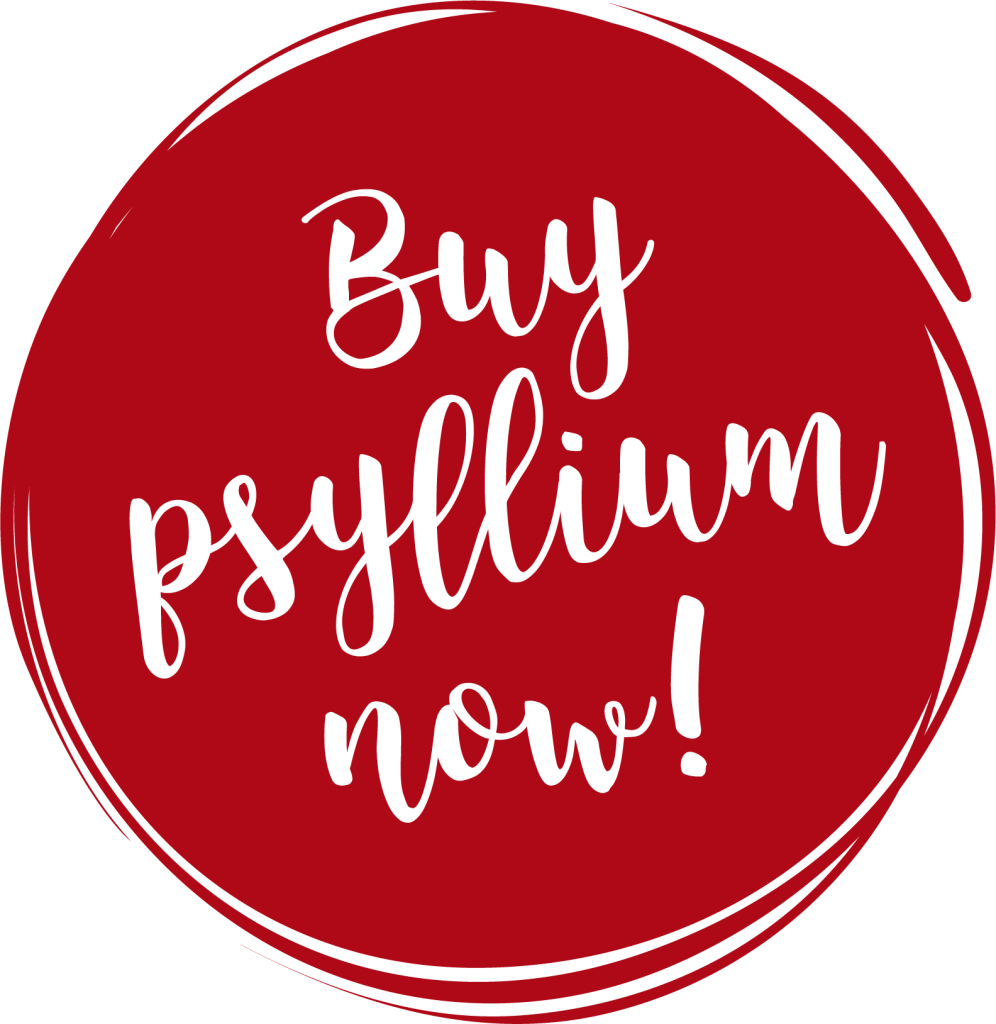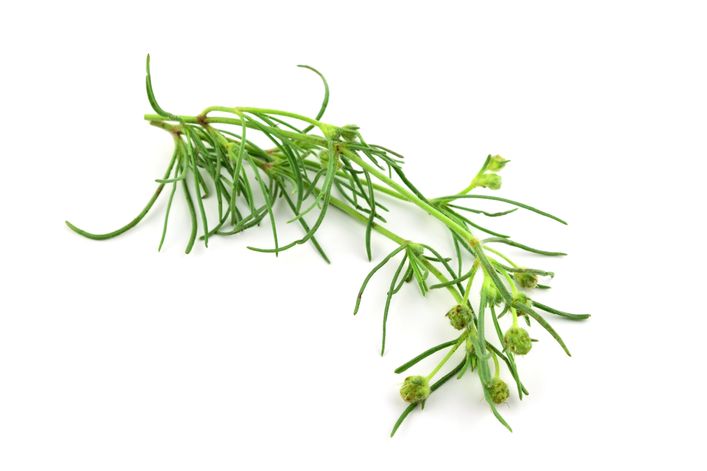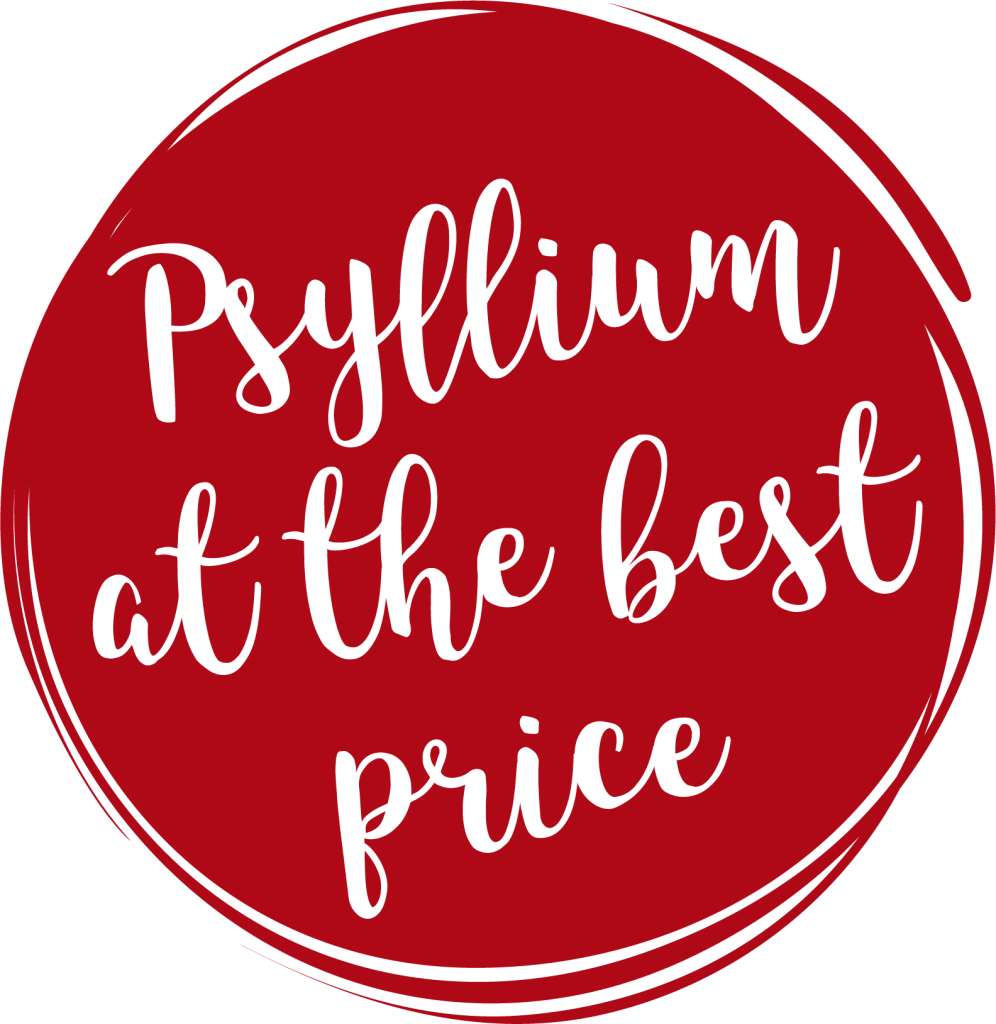About psyllium
Learn more about psyllium
Once mainly known in India, psyllium products today are gaining popularity in the Western world. The number of uses for psyllium described in the relevant literature reveal their broad applicability in a wide range of areas.
Botanical origin:
Experts refer to the mature, whole, dry seeds of various plants of the Plantago genus as psyllium. In Europe, psyllium is brought to market via the main cultivation areas of Spain and Southern France. Some common names for the European varieties are psyllium plantain, flea wort, shrubby plantain and sand plantain.
Psyllium from the cultivation area of Spain comes from Plantago afra L. (Syn. Plantago psyllium L.; psyllium plantain) and is nativ
Psyllium grown in France comes from Plantago indica L. (Syn. Plantago arenaria Waldst. et Kit., sand plantain) and originally comes from Central and Southern Europe, Siberia and the Caucasus.
Psyllium from India is known as Indian flea seed, or Indian or blond psyllium, and comes from Plantago ovata FORSSK. (Plantago ispaghula ROXB.). Plantago ovata is native to India, Pakistan, Iran, Afghanistan, Israel and the Canary Islands. The main cultivation areas are India and Pakistan.
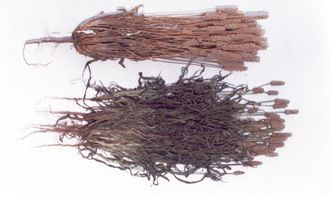
Harvesting method for psyllium: The main harvest period for psyllium is from June to October.
If possible, psyllium should be harvested under clear, sunny and dry weather conditions.
High night temperatures and cloudy, rainy weather have a negative impact on psyllium yield.
Psyllium plants are annual with low nutrient requirements. They prefer slightly sandy to medium loamy and heavy clay soils. It thrives in acidic, neutral and alkaline soils. Psyllium cannot grow in the shade. Sowing in the first week of November delivers the best yields. Sowing too early makes the crop susceptible to powdery mildew, while sowing too late results in slow growth during the winter months. In addition, the risk of the seeds being crushed by heavy rainfall increases during the months of April and May. The fruit of the psyllium plant is a bilocular capsule. In this capsule, there are two small, elliptical seeds that look like fleas, which is why they are sometimes also called flea seeds.
Psyllium extraction: The seeds are crushed and extracted by winnowing with a blower.
Psyllium – structure: In plants of the Plantago genus, mucilage is found in the leaves and in the epidermis of the seed husk. The mucilage in the leaves contains mostly arabinogalactans and rhamnogalacturonan acid chains. The mucilage in the seeds contains different types of branched D-Xylan, L-Arabinose, L-Galactose, L-Rhamnose, D-Galacturonic acid, D-Glucuronic acid, depending on the Plantago genus. Psyllium consists of branched acidic arabinoxylans that are able to make colloidal systems in aqueous systems. D-Xylose and L-Arabinose, L-Rhamnose and D-Galacturonic acid are contained in the hydrolysed medium. Blond psyllium contains 4-O-methyl-D-glucuronic acid, which gives it acidic properties.

Appearance of psyllium:
All parent plants of the genus are annual, low-growing herbs with lance-shaped to narrow, linear leaves and short to very short spike-shaped flower heads.
There are differences between the European and the Indian types. At Golden Peanut, we handle the trade and distribution of nearly all common grades of blond psyllium seeds and husks on the market. The products we supply are produced under safe conditions, packed in sealed bags and delivered. We ensure complete traceability throughout the entire supply chain and test all grades for purity in the laboratory.
Psyllium composition: The epidermis of the European psyllium species contains approximately 10-12% mucins (Arabinoxylans) with a swelling capacity of at least 10. Blond psyllium husk contains approximately 20-30% mucilage. The seeds themselves contain fatty oil, hemicellulose, proteins and iridoid glycosides (including aucubin). Blond psyllium husk consists of the outermost mucous-containing layer of the husk epidermis and the underlying layers of the seed husk.
Nutritional value of psyllium: Golden Peanut psyllium products contribute to the daily requirement of energy-supplying nutrients (protein, fat, carbohydrates) and fibre as follows:
Whole blond psyllium seeds 99% pure
| Nutritional information per 100 g: | |
|---|---|
| Energy | 757 kJ / 190 kcal |
| Fat | 5,90 g |
| – of which saturated fatty acids | 1,20 g |
| Carbohydrates | 3,80 g |
| – of which sugar | < 0,50 g |
| Fibre | 63,3 g |
| Protein | 2,40 g |
| Salt | 0,30 g |
Blond psyllium husk 95% pure
| Nutritional information per 100 g: | |
|---|---|
| Energy | 743 kJ / 187 kcal |
| Fat | 0,50 g |
| – of which saturated fatty acids | 0,05 g |
| – of which unsaturated fatty acids | 0,21 g |
| Carbohydrates | 4,00 g |
| – of which sugar | < 0,47 g |
| Fibre | 78,00 g |
| Protein | 2,50 g |
| Salt | 0,30 g |
Blond psyllium husk 99% pure
| Nutritional information per 100 g: | |
|---|---|
| Energy | 774 kJ / 193 kcal |
| Fat | 0,50 g |
| – of which saturated fatty acids | 0,06 g |
| – of which unsaturated fatty acids | 0,21 g |
| Carbohydrates | 2,00 g |
| – of which sugar | < 0,24 g |
| Fibre | 88,00 g |
| Protein | 1,00 g |
| Salt | 0,30 g |
Blond psyllium husk 95% pure, ground
| Nutritional information per 100 g: | |
|---|---|
| Energy | 772 kJ / 192 kcal |
| Fat | 0,50 g |
| – of which saturated fatty acids | 0,06 g |
| – of which unsaturated fatty acids | 0,21 g |
| Carbohydrates | 3,00 g |
| – of which sugar | < 0,24 g |
| Fibre | 88,00 g |
| Protein | 1,00 g |
| Salt | 0,30 g |
Blond psyllium husk 99% pure, ground
| Nutritional information per 100 g: | |
|---|---|
| Energy | 774 kJ / 193 kcal |
| Fat | 0,50 g |
| – of which saturated fatty acids | 0,06 g |
| – of which unsaturated fatty acids | 0,21 g |
| Carbohydrates | 2,00 g |
| – of which sugar | < 0,24 g |
| Fibre | 88,00 g |
| Protein | 1,00 g |
| Salt | 0,30 g |
Psyllium is a natural product. Its nutritional values should be taken as reference values. They are subject to natural fluctuations.
Sensory properties of psyllium: Psyllium is odourless. It tastes bland and has a slimy mouthfeel when chewed. European psyllium varieties are light brown to black brown. Blond psyllium is pale pink to beige in colour.
What I especially like about Golden Peanut psyllium
is that it’s gluten and lactose-free, and that it is also organic
and free from additives.
Rainer Soltau aus Heidenheim
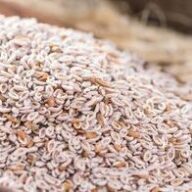
Whole blond psyllium seeds
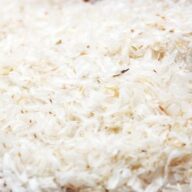
Blond psyllium husk

Blond psyllium husk, ground
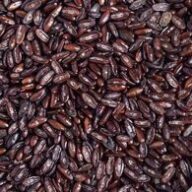
Black psyllium
All psyllium types are now also available as certified organic grade. This means that no chemical fertilisers or pesticides are used in cultivation. The harvesting and processing are exactly the same as for conventional psyllium; however, organic grade is even more strictly controlled by global organic certification bodies. Every operation in the entire supply chain is audited several times a year by official inspection agencies. Deviations are sanctioned and non-compliance with defined measures results in the withdrawal of organic certification.
The psyllium seeds are carefully harvested by hand and are sifted and dried immediately after harvest. Our psyllium seeds grow best in the region of Gujarat in India. This is the world’s largest growing area for psyllium. The climatic conditions in Gujarat are ideal for the cultivation of psyllium. Our psyllium owes its high quality, purity and sensory properties to the climate in Gujarat..
Whole psyllium seeds
Whole psyllium seeds are the complete, mature seeds of the psyllium plant. They resemble flaxseeds in appearance. Our whole psyllium seeds are 99% pure and without additives.
Psyllium husk
Psyllium husk is the husk of the seeds of the Plantago Ovata plant. Blond psyllium contains valuable mucous-forming fibres that swell upon contact with liquid. As these swelling agents are only found in the outer layer of the psyllium husk, the husk is separated from the seed by a special process. We sell the husks as psyllium husk standalone products with a swelling capacity of up to five times higher.
Psyllium husk powder
Psyllium husk powder refers to the ground psyllium husk from the Plantago Ovata plant. The ground husks are graded according to grind size, as expressed in mesh. The powder is mainly used in the food and feed industry as a valuable additive, but we also have customers who prefer our powder to psyllium husk.
Which grade is used for which purpose?
We offer a wide range of psyllium products from India in many grades of purity and in different packaging sizes. We ensure the highest quality through careful monitoring, from the harvest in the country of origin through to the finished product. All raw materials are regularly inspected in the laboratory and analysed for contaminants and foreign matter. The raw material and each finished production batch are subject to a comprehensive analysis in the country of origin before receiving approval for export to Germany. When the goods arrive around six to eight weeks later in the port of Hamburg, samples are taken and tested again in German laboratories.
Overall, the purity of psyllium products may vary. At purity levels of 85 to 99%, the product is suitable for consumption in its raw state.
A mesh number is given for every ground psyllium product. The number 60 or 100 mesh refers to the grain size of the ground husks, or grind size. A similar system is used for cereal flours: White wheat flour has a milling grade of 405, while wheat meal has a milling grade of 1,700.
PLEASE NOTE: For cereal products, the higher the milling grade, the higher the percentage of husk contained in the product. For psyllium, it is the other way around. The higher the grind size, the lower the percentage of husk contained in the product.
The swelling capacity for whole psyllium seeds is approximately 11 mg/l and approximately 40 – 60 mg/l for psyllium husk. Psyllium husk ground to a power has the highest swelling capacity.
Since psyllium is a natural product, the grade of the product is subject to natural fluctuations. Customers who use and process our psyllium products in their recipes as ingredients receive an analysis providing all the purity parameters tested in the laboratory with each delivery of psyllium products. This is the only way to assess how the product will behave when used as an ingredient in food or feed products. When filling small packages with psyllium seeds that consumers can buy in our online shop, the declarations on the label and product packaging are checked for accuracy and the goods are checked for compliance with the specification. This lets our customers know that they are receiving an inspected product from the manufacturer. These parameters are also reviewed regularly by the competent supervisory authorities.
Only products with a purity of 99% can be called premium grade: This grade contains only a little more than 1% of natural residues from the harvest. The high purity is evident from the very light colour of the psyllium husk, which is very white with few dark specks. The highest quality organic psyllium husk is snow white in colour. So far, there has been only one producer in India capable of producing this exclusively premium product, made from the finest grade psyllium using a high-tech cleaning system.
